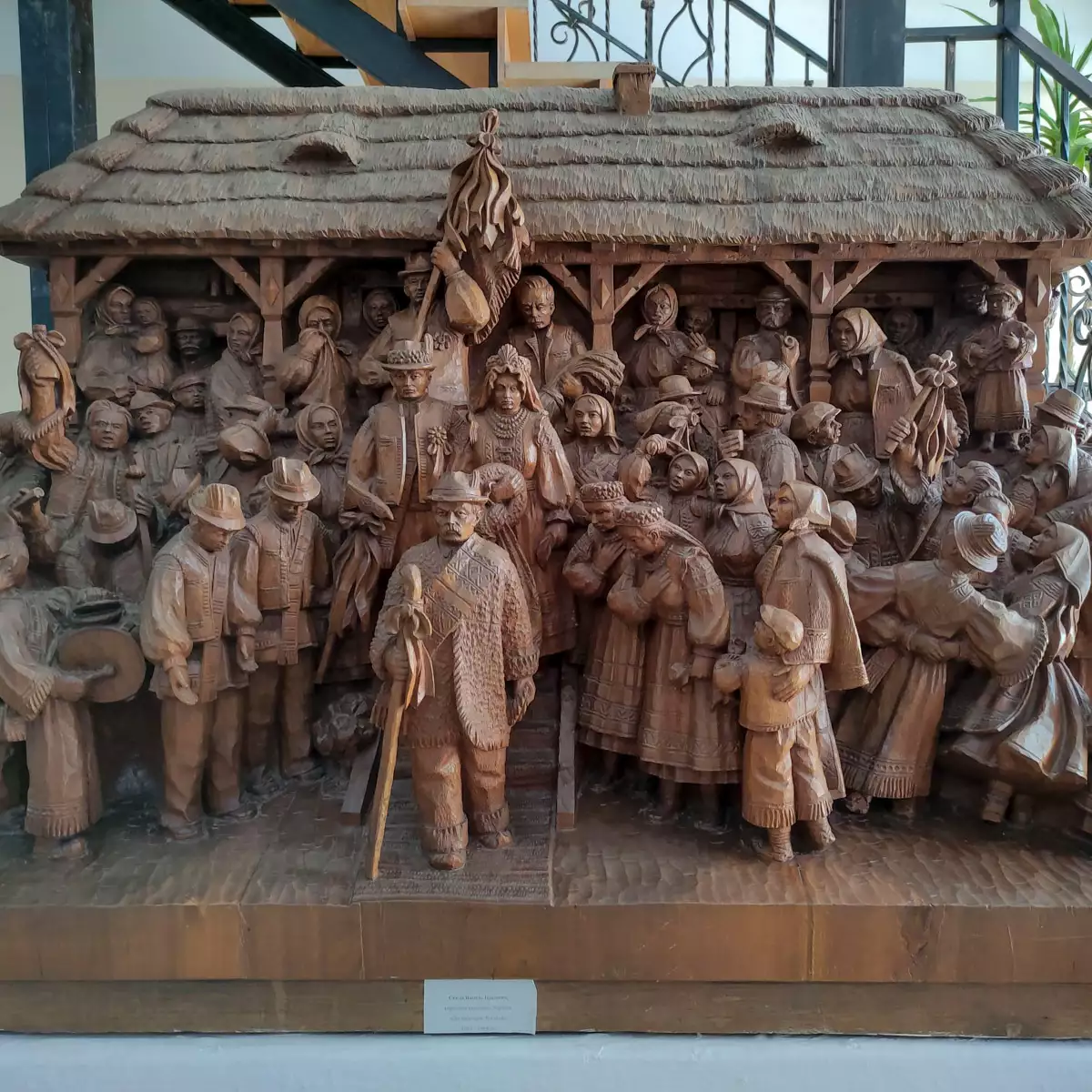🕒 Date of last update of the article: 16.02.2024 at 5:54 p.m | 🖋 Author: Viktor Shatrov
Надсилайте актуальну інформацію та отримуйте більше цільових клієнтів. Ми розмістимо ваш об’єкт у нашому каталозі та покажемо поруч із локаціями, а також у загальному каталозі, це безкоштовно!
🕒 Date of last update of the article: 16.02.2024 at 5:54 p.m | 🖋 Author: Viktor Shatrov
In the shadow of the castle walls Uzhgorod fortress is a unique museum-skansen. During the 1960s and 1970s, two dozen wooden buildings dating back to the 18th and 19th centuries were moved from the villages of the Transcarpathian region to the museum. This is one of the first open-air museums or skansens in Ukraine. It was opened on 27 June 1970. The museum is designed not only as an “exhibition of achievements” of folk architecture Transcarpathian, but also as a small independent village.

Content
| 🗺 Location | N48°37′15″ E22°18′21″ |
| 🔰 Founded | 1965 |
| 🏘 Opening date | June 27, 1970 |
| 🏛 Number of exhibits | About 15,000 |
| 🧭 Distance from the center of Uzhgorod | Near |
| 🚙 Road for | Car, on foot |
| 🏕 Stop with a tent | No |
| 🏡 Housing nearby | Uzhgorod |
| ☕ Cafes and shops | Uzhgorod |
On the area of four hectares, there are samples of the dwellings of Transcarpathians from lowland and foothill regions – the valley dwellers, Hungarian and Romanian population of the region. The dwellings of the mountain inhabitants of Transcarpathia: Boikos, Lemkos and Hutsuls, as well as some technical (water-powered mill, water mill, cloth mill, forge) and public buildings (church, school, tavern), as well as small architectural forms (well, beehives, fences). The interior of each hut is recreated in detail. In total, the museum has more than 15,000 exhibits.
The most valuable residential buildings in the museum include the following:
The pearl of the museum’s exposition is a wooden church from the village of Shelestova, which was dedicated to the Archangel Michael and built in the Baroque tent style in 1777. This example of sacred architecture has been moved from place to place twice in its history. In 1927, the church was moved to Mukachevo, and in 1974, he joined the Uzhgorod Skansen.
Uzhgorod Skansen is one of the most interesting and beautiful museums in our region. It recreates the atmosphere of a traditional Transcarpathian village. If you visit the museum in spring, you will stroll through the blooming garden, in summer you will see ripe tomatoes in the well-kept beds and smell freshly cut hay, see lambs walking carefree around the museum. In autumn, you can enjoy the ripeness of plums and apples in the skansen. At each hut, you will be greeted by a museum worker – a woman whose caring hands maintain an atmosphere of warmth and comfort.
The museum is located at 33a Kapitulna Street, Uzhgorod. Its doors are open to visitors every day except Tuesday from 10.00 to 18.00.
| 🔰 Start | From Uzhgorod Castle |
| 🚶 Walking distance (via Kapitulna Street) | 170 meters |
| 🕒 Approximate time | 2 minutes |
| ⬆ Rise | Mostly without ups and downs |
Author of the article: Viktor Shatrov
Number of articles: 1100+
Knowledge of languages:: Ukrainian, English
Favourite quote: “Travelling – the only thing that makes you richer“
He was born and lived all his life in Uzhhorod. He graduated with a gold medal from Uzhhorod School No. 1 named after Taras Shevchenko (now Uzhhorod Lyceum named after Taras Shevchenko). He studied at the History Department of UzhNU, graduating with honours in 2009. He worked as a senior researcher at the Transcarpathian Museum of Folk Architecture and Life, a lecturer at the East European Slavic University.